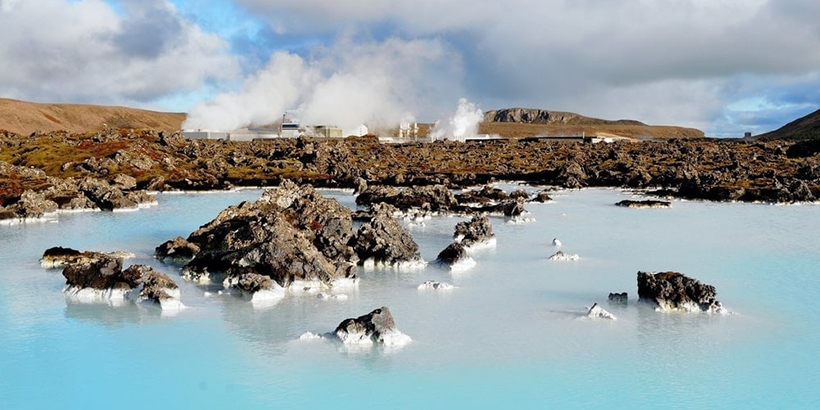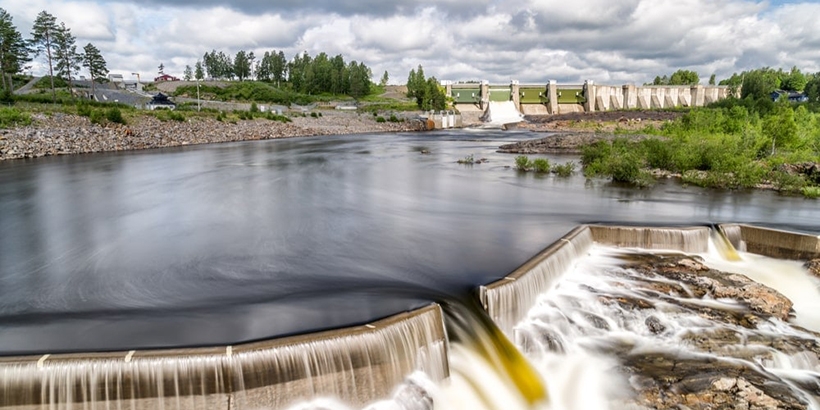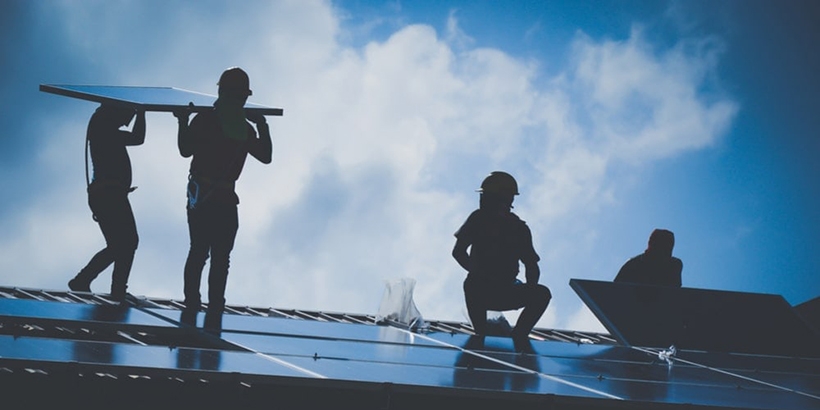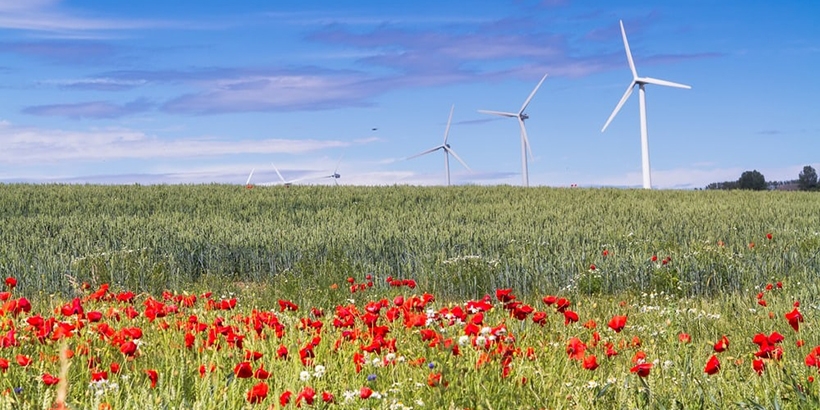Renewable energy has the real potential to become the primary source of electricity for countries that currently account for 99% of global carbon emissions. In fact, by 2040, the world will be largely powered by renewable energy. But making this future a reality will require a major push of social and political will. Some countries are already making the shift to clean, renewable energy. Read more to find out which countries are ahead of the curve in renewable energy.
Iceland's Blue Lagoon
Iceland leads the way with almost 100% renewable energy. Iceland produces almost 100% of its energy from its renewable natural resources. Compared to other countries, Iceland is the largest producer of clean energy per capita. Not only does most of Iceland's energy come from hydroelectric plants and geothermal power plants, but the geothermal power plant in the Blue Lagoon has become a tourist attraction, promoting the country's energy efficiency and independence. The switch to renewable energy came early for Iceland. As dependence on fossil fuels wreaked havoc on Iceland's economy, the country developed a strategy to move away from imported fossil fuels and utilize its renewable resources.

Solar Energy in Sweden
Sweden vows to be the first country to go 100% fossil fuel free. No slouch when it comes to the environment, Sweden ambitiously announced its goal of becoming completely fossil fuel-free. It then challenged the rest of the world to go beyond that goal. Sweden is rich in flowing water and biomass, and hydropower and bioenergy are its main sources of renewable energy. Sweden has increased its investments in wind, solar, energy storage, smart grids and clean transportation. However, it is Sweden's investment in wind energy that has allowed it to meet its goal of 50 percent renewable energy use by 2030 ahead of schedule and allows it to easily reach its 100 percent goal by 2040.

U.S. Solar Jobs
U.S. solar employment exceeds coal and nuclear employment combined, and in 2018, the U.S. installed a new solar panel system every 100 seconds, ranking fourth in the world for solar PV installations, according to 2016 data. In addition, the U.S. ranks second in the world in installed wind energy capacity after China. Solar installations in the U.S. continue to grow, in part due to a 30 percent investment tax credit that will continue through the end of 2019. Overall, solar jobs have grown 159% since 2010, adding nearly 150,000 jobs during that time.

Costa Rica Solar
Costa Rica has achieved 95% renewable energy generation. Although small, Costa Rica's unique geographic location makes it a player in the race for energy independence. The country's 67 volcanoes allow it to derive a great deal of energy from geothermal sources. It also obtains energy through investments in hydropower, wind, and solar energy. The country aims to be carbon neutral by 2021 and is well on its way to achieving that goal. For several years now, Costa Rica has been using renewable energy exclusively for an average of 300 days per year.
Renewable Energy in Nicaragua
Nicaragua is committed to achieving 90% renewable energy by 2020, and like Costa Rica, Nicaragua has volcanoes that make geothermal energy production feasible. The Nicaraguan government has also invested in solar and wind energy, so the ambitious goal of 90% renewable energy by 2020 is achievable. As a non-oil-producing country, Nicaragua has been dependent on foreign oil to meet its energy needs.
German Renewable Energy
Germany won't let dark clouds obscure the future of solar energy. When it comes to solar energy, you might not expect cloudy Germany to be the frontrunner. However, as a world leader committed to renewable energy, Germany produces enough electricity from renewable sources in six months to power the nation's homes for a year. Despite being a cloudy country, Germany has set an ambitious goal of generating 65% of its electricity from renewable sources, including solar, by 2030.
Wind Power in Uruguay
Uruguay has dramatically increased its share of renewable energy to 95 After nearly a decade of hard work, Uruguay has achieved the impressive goal of generating 95% of its energy from renewable sources. This is a remarkable achievement, given that as recently as 2012, Uruguay was generating only 40% of its electricity from renewable sources. Uruguay has invested in solar and wind energy thanks to strong public-private sector partnerships and a supportive regulatory environment. All of these initiatives require support and efforts comparable to building interstate highways, the Anglo-French undersea tunnel, or putting a man on the moon. However, the goal is within reach and can be achieved with existing technology. As a society, we just need to decide that this is the path we want to take.

Three Wind Turbines in a Yellow Rapeseed Field
UK relaunches ambitious renewable energy program The UK is no stranger to renewable energy. The UK has huge wind power potential and now combines grid-connected wind farms with stand-alone turbines. Today, wind farms in the UK generate more electricity than coal power plants. In fact, there is sometimes enough wind power in Scotland to supply 100% of Scottish households. Ireland is also becoming a leader in wind power, with enough wind power to supply energy to over 1.26 million homes. Even without government funding, the UK is hoping to revive the Swansea Tidal Lagoon project to build a six-mile seawall with turbines to produce low-carbon electricity.

Wind Turbines on Bornholm Island
Denmark has an ambitious plan to achieve a 100 percent fossil fuel-free target by 2050. There is no doubt that Denmark is making steady progress towards this goal: in 2015, Denmark broke a record by generating 42 percent of its electricity needs from wind power, an achievement that signaled great progress and commitment to renewable energy. Wind power has become an important part of Denmark's energy mix, providing a solid foundation for the country's sustainable development.
The island of Bornholm, one of the most important areas in Denmark for advancing the wind power program, has wind turbines for home use that are a perfect combination of technology and nature and a symbol of Denmark's energy transition. These turbines stand tall and rotate in the wind, transforming wind energy into clean electricity that is constantly delivered to thousands of homes, providing a stable power supply for the islanders.
As of today, Denmark is on track to generate 50 percent of its electricity from renewable sources, mainly wind power, by 2030. The realization of this goal depends not only on technological advances and the construction of large-scale wind power facilities but also on the government's policy support and the promotion of environmental awareness among the entire population. The Danish government encourages enterprises and individuals to invest in wind energy projects through various policy incentives while strengthening international cooperation to share wind energy technology and experience.
Eco-Energy Renewable Solar Panel Factory
China is the world's largest investor in renewable energy, despite being the world's largest polluter, it is also the world's largest investor in renewable energy.In 2018, China's renewable energy capacity grew by 12%. By the end of 2018, the total installed renewable energy capacity increased to 728 gigawatts (GW). This represents about 38.3% of China's total installed electricity capacity. In 2018, China added 20.6 gigawatts (GW) of installed wind power capacity and 44.3 GW of new solar capacity. China also completed the installation of 8.54 gigawatts of hydropower capacity. All in all, China seems to be doing its best to combat pollution.
Skyline View of Solar Power Panels
Morocco wants to reduce carbon dioxide emissions, and the Moroccan government has set a goal of meeting 42% of its energy needs from renewable sources by 2020. To achieve this goal, Morocco has launched one of the world's most extensive solar energy programs to build a power plant capable of generating 2,000 MW (or 2 GW) of solar electricity. Morocco has also implemented a wind energy program that includes Africa's largest wind farm, which will meet the electricity needs of thousands of households and reduce CO2 emissions by 900,000 tons per year.
Early Morning Windmill Farms, Orange Blue Skies
Kenya, the beacon of hope for Africa, is committed to leading the continent in wind power generation. The Lake Turkana wind power project is an important part of this vision and will increase the country's electricity supply by 13 percent. This is more than just a project, it is an important step towards a sustainable future for Kenya. It is worth noting that about 70 percent of Kenya's electricity already comes from renewable sources, which is a remarkable achievement globally. As the Lake Turkana project moves forward, Kenya will further consolidate its position as a leader in green energy and become a model for the rest of Africa to follow. The windmill spinning in the morning sun not only symbolises hope and progress, but also demonstrates Kenya's strong commitment to the future.
Solar Panels at a Solar Power Plant in a Remote Area of Northern India
India is looking for a way to effectively wean itself off coal power permanently. The Indian government has set an ambitious target of generating 175 gigawatts of electricity from clean energy sources by March 2022. While there is still a long way to go in the future, installed renewable energy generation capacity already accounted for 71 gigawatts of India's installed power generation capacity in 2018. Moreover, renewable energy projects continue to increase year-on-year. in 2017, for the first time, installed renewable energy capacity surpassed that of coal-based power plants, pointing the way to India's renewable energy future.
If you are interested in learning more about how solar panels work, home solar panels, or flexible solar panels, contact us at powerhome online shop and we will help you in any way we can.
(1).png)
(1).png)